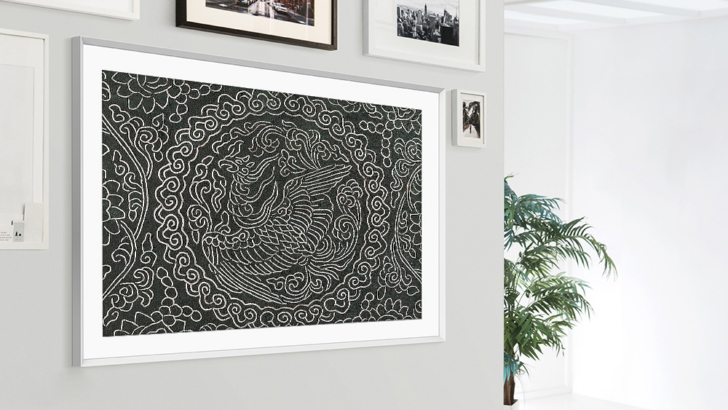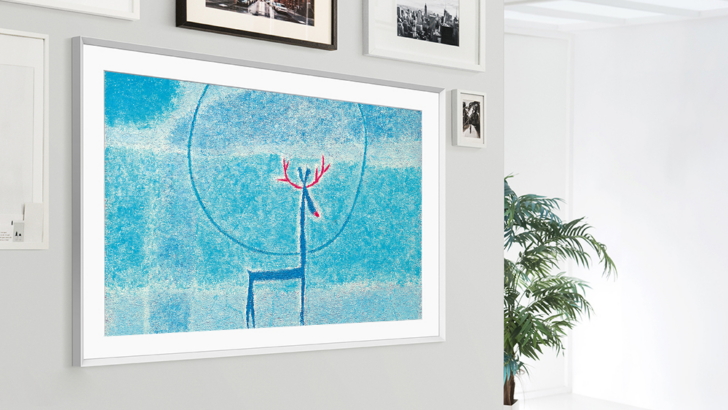[Interview] How the Samsung Art Store Is Expanding Access to The Belvedere
on September 16, 2022
To put art before the eyes of consumers, Samsung partnered with The Belvedere to release globally renowned works of art including art pieces by Gustav Klimt and Egon Schiele in the Samsung Art Store. As consumers continue to be enthralled by both physical and digital art, this partnership expanded access to some of the world’s most notable works of art.
While the adoption of technology within the art space is inevitable, widespread adoption of technology poses an important challenge: how to expand works of art digitally without taking away from the uniqueness of their physical form. For consumers, technology can break barriers and change how art is consumed. It can also provide a look into the future of art as the blending of the physical and digital art worlds occurs.
Samsung Newsroom recently sat down with Wolfgang Bergmann, CFO of The Belvedere to discuss how this partnership is paving the way for continued digital growth within the art space while still preserving the culture and richness of physical art.

▲ The Belvedere by Lukas Schaller
Q: Briefly tell us about your work at The Belvedere.
Our mandate is to set the course for The Belvedere, which is one of the oldest museums in the world, and a showcase for contemporary art. In that task, we are faced with the challenge of preserving the past while also being forward-looking and breaking new ground, and this is what makes our job so exciting.
Q: The intersection of art and technology has grown significantly in recent years, paving the way for the democratization of art, and it seems especially evident in its creation and accessibility. What is your take on this? How has this provided opportunities and/or challenges in the art world today?
The Belvedere aspires to be one of the most prestigious cultural institutions in the digital world, thereby reaching new audiences. Today, around half of the Belvedere collection is available online. Those interested in art can easily research the museum’s inventory and scroll through 900 years of art history, from the Middle Ages to the present day. However, I am convinced that this will only increase their desire to visit Vienna and The Belvedere in person.
Q: Technology also makes art more convenient and accessible to collectors. How have you seen this play out over the years?
Digital art space is getting easier to access, especially through NFT technology. However, this won’t replace classical art but rather add to it. Quite recently, we decided the time was right to undertake a unique NFT project, and a centerpiece of The Belvedere’s collection — The Kiss by Gustav Klimt — was unveiled in the new format.

▲ The Kiss (Lovers) (1908-1909) by Gustav Klimt
Q: Digital art displays, such as Samsung Art Store, have allowed users to enjoy unique experiences from the comfort of their homes. How do you see this technology playing out in the coming years and what sort of impact will it have in the art industry as a whole?
I think this technology definitely arouses interest in art and enhances the experience of appreciating the original piece. Owners and viewers of the digital image can form a personal connection to the original artwork.
Q: What differences do you see between displaying your work in-person vs. digitally on The Frame?
A screen cannot replace the aura of the original piece. At the end of the day, The Frame and the Art Store invite people to see the original in the museum. On the other hand, museum visitors who have admired an original work of art on-site will be happy to bring it digitally into their living room. Modern screens are so technically advanced that you may discover things digitally on The Frame that you could not see with the naked eye in a museum.
Q: How do you envision the future of art exhibitions and museums?
Art exhibitions will continue to exist online and offline. The metaverse is becoming a part of our life, but it’s not a substitute for “real” life. The physical visitor experience in a museum will therefore always remain important.

▲ In the Bower (ca. 1901) by Marie Egner
Q: Can you tell us more about how this partnership came to be? Why did you choose The Frame? From your perspective, what are the benefits of Samsung Art Store?
We were thrilled by the idea of bringing our collection to new formats, like Samsung Smart TVs, in order to give people access to art in their own living rooms. The Samsung Art Store provides visual variety on the screens, you can choose pictures according to the seasons or your personal mood, and you can always discover something new. Samsung leads the industry in technological innovation, so the Samsung Art Store is the right partner for us.
Art pieces from the Belvedere collection on the Samsung Art Store are viewed many times a month. I am sure that the viewers are influenced by the artworks, consciously or unconsciously.

▲ Brushwood Collector in the Vienna Woods (1855) by Ferdinand Georg Waldmüller
Q: Some of Belvedere’s most popular works in the Art Store include In the Bower by Marie Egner, The Kiss by Gustav Klimt and Blooming Poppies by Olga Wisinger-Florian. Are these also popular for museumgoers and are there any other pieces in the collection in the Art Store that you foresee gaining more mainstream popularity?
Gustav Klimt’s The Kiss is an icon piece of romantic love and a centerpiece of The Belvedere’s collection — people all over the world are smitten with it. Landscapes and nature motifs are also especially popular, both online and offline. As for increasing popularity, I see paintings by female artists from around the turn of the century, such as Broncia Koller-Pinell or Emilie Mediz-Pelikan, continuing to rise, as well as more works by Gustav Klimt and Egon Schiele.
I would recommend some autumn motifs, such as Brushwood Collector in the Vienna Woods (1855) by Ferdinand Georg Waldmüller and Orange Grove on the French Riviera (1903) by Broncia Koller-Pinell.

▲ Orange Grove on the French Riviera (1903) by Broncia Koller-Pinell




